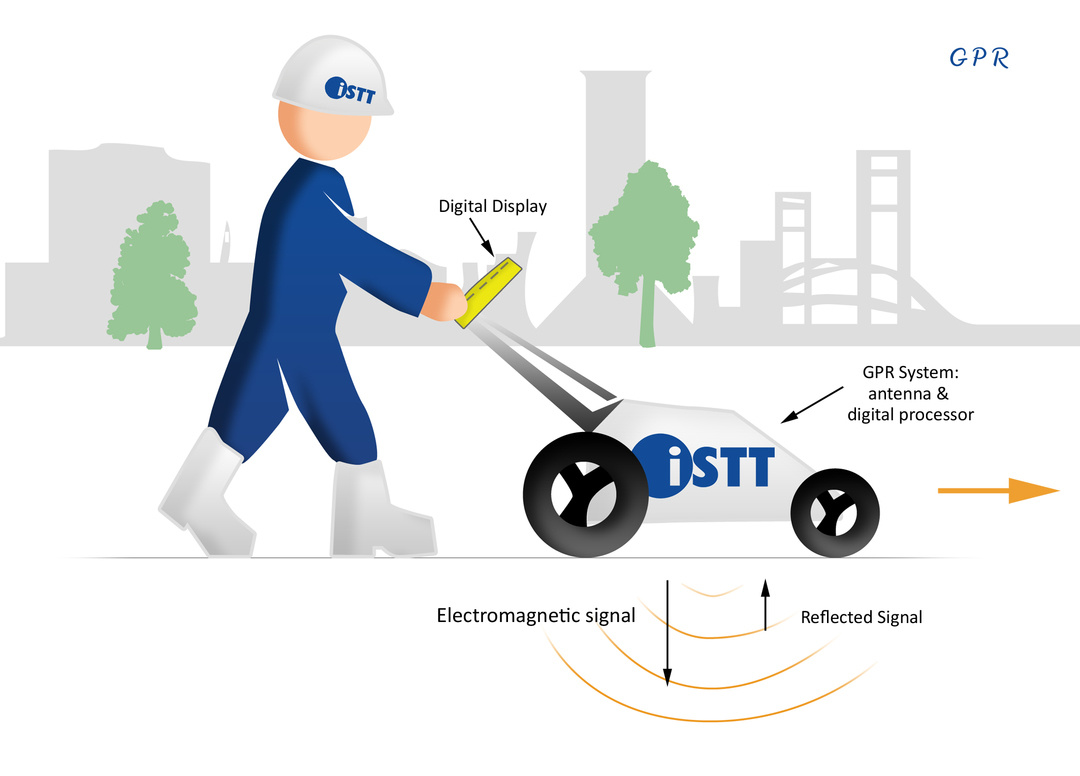- Ground Penetrating Radar (GPR)
-
There are a wide range of techniques available to locate buried pipes. Most of these systems use electromagnetic waves or signals transmitted into the ground or from underground utilities. These technologies may be broadly classified as either electromagnetic or ground penetrating radar (GPR).Electromagnetic pipe locators detect and locate the source of electromagnetic waves generated by power or telecommunication cables, or signals injected directly, or by induction, from metallic pipes and underground metallic objects. Non-metallic pipes that have electro markers installed with or near the pipe can also be detected using electromagnetic waves. Electro markers come in a variety of frequencies that can be matched to a specific type of utility allowing the operator to both locate and identify the type of pipeline. Electromagnetic systems can accurately locate the path of underground utilities but not their depth.GPR is a nondestructive method for detecting subsurface structures, voids, discontinuities, and changes in material. GPR uses radar pulses transmitted into the ground to image the subsurface by recording electromagnetic signals reflected back to the GPR system. GPR can be used in a variety of soils but works best in dry sandy or hard materials such as concrete, granite, and dry sandstone. A GPR system is comprised of transmitter located on or near the ground that focuses electromagnetic waves into the ground. The transmitted waves reflected off buried objects, the boundaries between different soils, and other subsurface discontinuities are captured by the GPR radio antenna. These data are process against time creating a map or radiogram of the subsurface, which is stored digitally and can be viewed from an onboard display unit, or post-processed for detailed data elaboration.

The International Society for Trenchless Technology
 Cart
Cart
